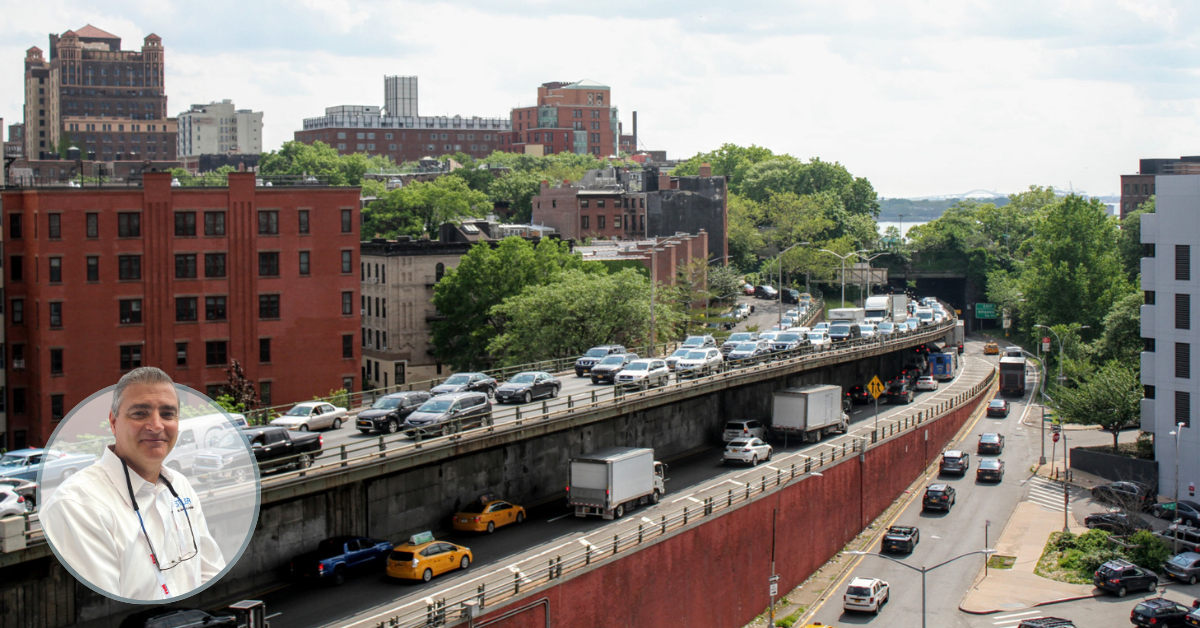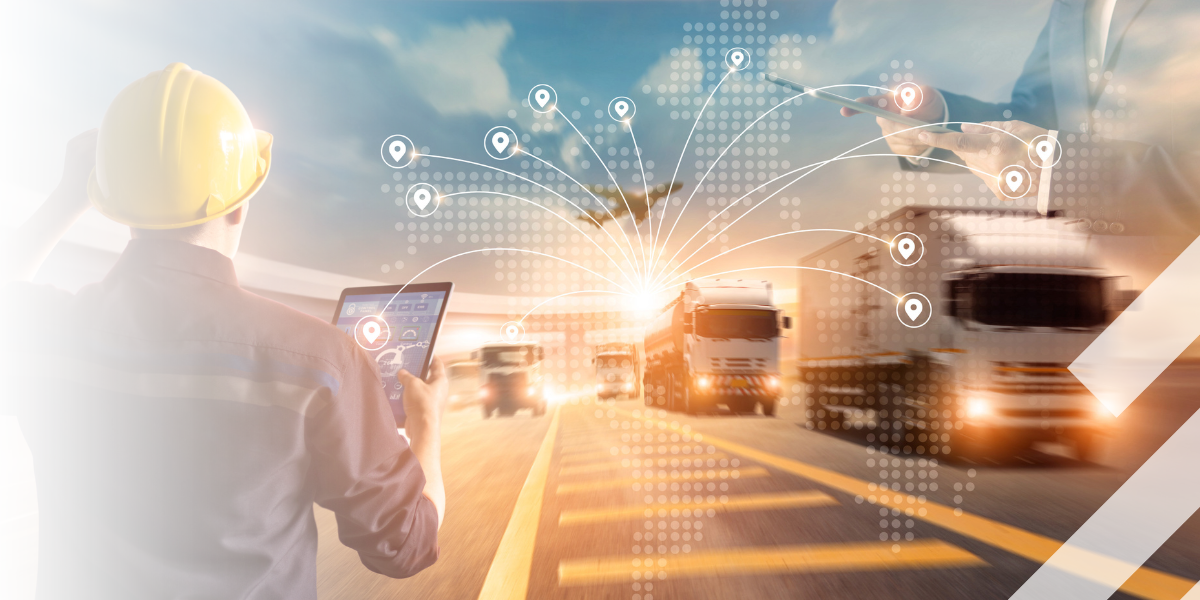Data is the new fuel for mobility
The rise of our global population and urbanization pose challenges to keep our roads safe, environmentally friendly and smart. Sharing our knowledge is key to speed up the mobility transition together. Intertraffic Amsterdam is fast approaching. Check out the key global mobility developments which will also be extensively featured at our Amsterdam event.
The hottest topic in discussions, content and events developing smart and safer roads is smart mobility. What is smart mobility and how should we make the best use of it? According to Director Smart Mobility of the University of Eindhoven Carlo van de Weijer, smart mobility is only smart when we can improve our road safety and our environment. Unfortunately we are not (yet) as smart as we would like to be: “Many of the traffic casualties could have been prevented if technology that is already developed and on the shelf had been applied.”
We are either too slow to implement or we simply did not know about the existence of the solution. Too many people still lose their lives because they ended up on the wrong side of the road or drove into another car in a traffic jam. Despite the fact that we know about the latest technologies such as sensors that notify the driver when the car is too close to the rail. Thanks to these kind of technologies, many casualties caused by accidents like these could have been prevented. So how can we become smarter than smart mobility? These are the top 5 mobility developments:
Internet of Things, Artificial Intelligence, big data, 5G; the most important developments when it comes to the mobility industry. It is subject of almost every interview or conversation we have with leaders in the industry. Whether it is about improving road safety making use of smart traffic light systems, crowdsourcing for the benefit of a better urban traffic flow, urban planning or better management of emissions; data is the new fuel for mobility. Thanks to data we can speed up the mobility transition. We can improve the quality of life.
In the Netherlands one travels on average 1 hour per day of which 29% to commute and 40% for recreational purposes.
With data we can smarten our traffic management systems and we can receive real-time information on our travel details. The European Commission has calculated that congestion costs nearly 100 billion EUR per year; around 1% of the EU’s GDP. Governments can make good use of mobility data to improve the traffic flows and urban planning. They can use data to investigate whether driving 130 or 100 kilometres on the highway decreases traffic jams. Or to crowdsource traffic flows at train stations. Or even to improve accessibility for elderly people, making traffic lights switch to red slowly when crossing a busy street.
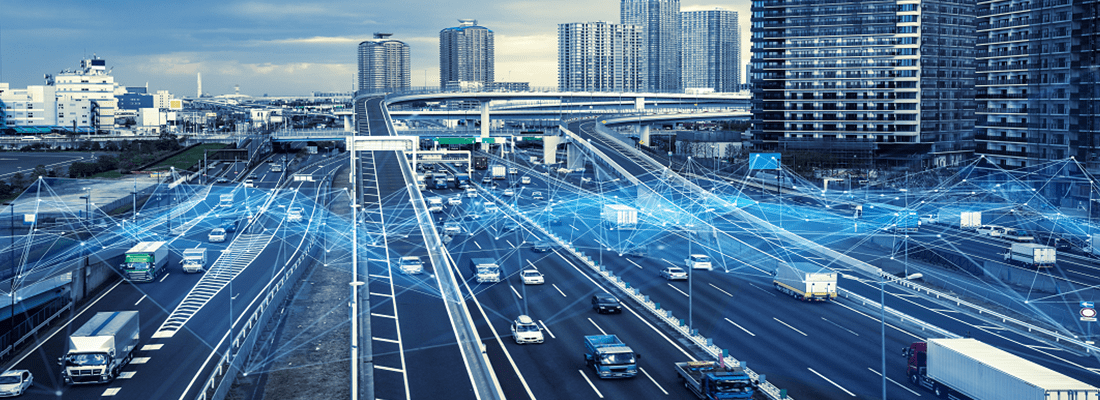
As Menno Nobel, Director Marketing & Sales of Thales, mentions in an interview, we have to learn how to use all this data in the smartest way possible. Making the optimum use of the data is not always as easy when dealing with traditional fragmented nature of the transport industry. How can we make sure all data is combined and shared in a safe way so that we can seamlessly transfer from car to train to bicycle? This is one of the next challenges faced to improve our traffic flows and our environment.
However, a future challenge that comes with data is not only to keep our roads safe, but to keep our data safe. Big data and sharing data has a lot to offer. But new solutions come with new challenges. We have to remain careful which data we share, how and to whom. Privacy regulations can be different in the US than in Europe (GDPR). Find out more about the big data and mobility at Intertraffic Amsterdam in April.
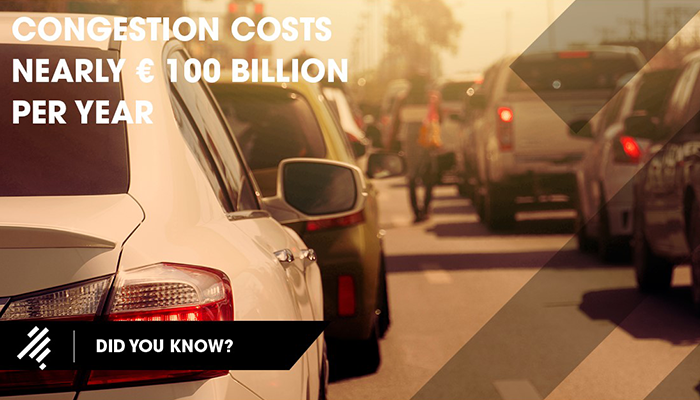
The majority of travellers have access to the Internet, apps and nav-com systems via smartphone and tablet. Solution vendors are able to customise mobility services based on real time information and personal preferences. The key concept behind Mobility as a Service (MaaS) is to provide travellers and goods mobility solutions based on actual travel needs. From personal mobility services or personal travel assistance, service platforms and in-car information systems to smart parking and ride-sharing but also solutions for urban distribution. Some examples of what can make our travel more comfortable.
Half of the current Dutch car owners say they are willing to give up their ownership.
Urbanization asks for new needs in transport and new solutions to tackle the problem of congestion and emissions. New transportation modes and shared mobility services have changed traditional transportation services. Mobility as a Service combines smart mobility and infrastructure with the use of data. MaaS revolves around shared mobility services. In the Netherlands we see a rise in vehicle sharing. 41,000 cars were shared in 2018 by 400,000 motorists. Plus half of the current car owners say they are willing to give up their ownership. But even in other countries like Mexico, 46% of the Mexicans in 2017 used an app for mobility services.
Car sharing is however still very low in Europe compared to vehicle ownership. 0.1% of all cars are currently shared. And in Europe and China we find a rise of other shared vehicles such as scooters and bikes. In 2017 Lisbon launched a bike-sharing scheme, with electric bikes to encourage cycling in the hillier parts of the city.
Amsterdam is leading the way in the Netherlands when it comes to successful MaaS pilots, like in the Zuidas. The city of Amsterdam wants to improve the possibilities for a multimodal area. A selected group of employees in the area was offered € 1,000 a month with which they could choose their own preferred transport, except their company car. Handing in their car keys was the only caveat. They were free to travel in any way they wished: first class by train, rent a Tesla or cycle to work if you want to save the money for something else. The pilot was so successful that a new MaaS app is supposed to be rolled out in 2020.
“The only way Amsterdammers will consider leaving the car behind is if they have a better and cheaper alternative,”
- Tijs Roelofs, smart mobility manager at the City of Amsterdam.
How can we put MaaS in its full potential? The biggest challenge we seem to face in a lot of discussions involving MaaS is the traditionally fragmented nature of the transport industry. Governments play a distinctive role in making regulations and protocols for data sharing. Something the Dutch Ministry of Infrastructure & Water Management is already facilitating. Like Eric Mink, programme manager MaaS at the Ministry mentioned at a presentation: “We should not wait for, but develop alongside the market. One year ago we developed an API together with around 30 Dutch vehicle sharing companies. The means of transport of these parties can thus be accessed in a clear and standardized way. And this has been copied internationally. So we can really name it an ecosystem instead of an egosystem.” The next step is to decide who is client owner: MaaS operators or MaaS providers?
MaaS in its full potential will offer the end-user a full perspective and real time information on every mode of transport to decide which one is best to take at a certain time of the day. This organically brings us to the third development: Multimodal transport.
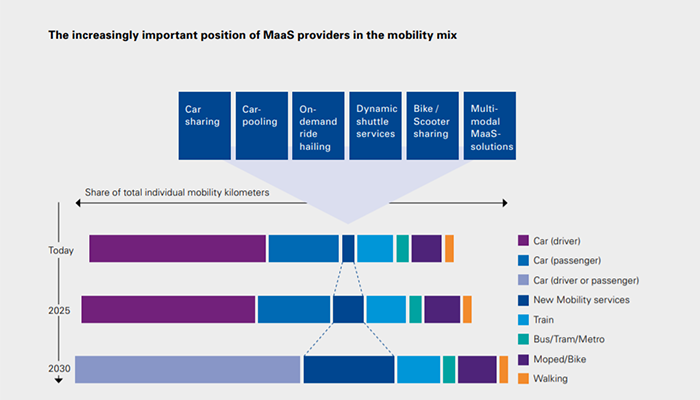
Source: KPMG
Thanks to the development of MaaS a shift in modes of transport is expected. Giving us better insight in all transport helps us to make a better personal choice. We will make use of several modes a day, transferring from bicycle or car to train, subway or taxi. And this can be shared even.
In Amsterdam walking and cycling account for 61% of the journeys. Healthy and better for the environment. But the next problem is finding a parking spot for the bicycle. When arriving at the train station by bike and finding out the parking station is full, it can be very stressful to find a spot somewhere else. In Amsterdam commuters take at least 5 minutes extra to park their bike at the station. Risking missing your train and your appointment. Having one combined digital solution to find information about your travel seems most important for a seamless journey.
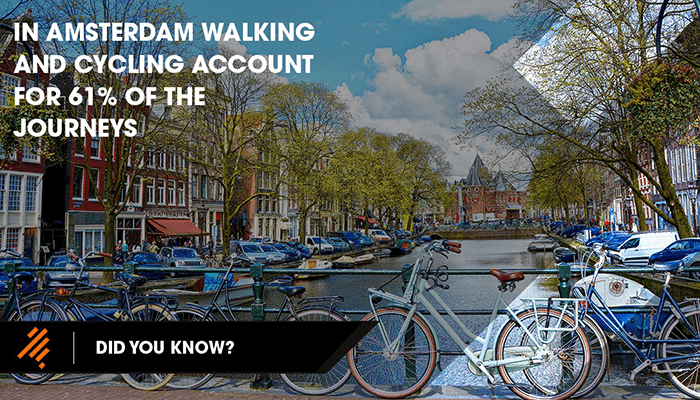
Not using our car and traveling by public transport or bicycle is better for our environment and indeed saves us a lot of space. In Utrecht, the Netherlands the world’s biggest parking lot for bicycles was opened in 2019 with space for over 12,500 bicycles. However, parking our vehicle, whether it is a car or a bicycle will remain a challenge when we do not know how many spaces there are left. And will there still be enough space in five years’ time?
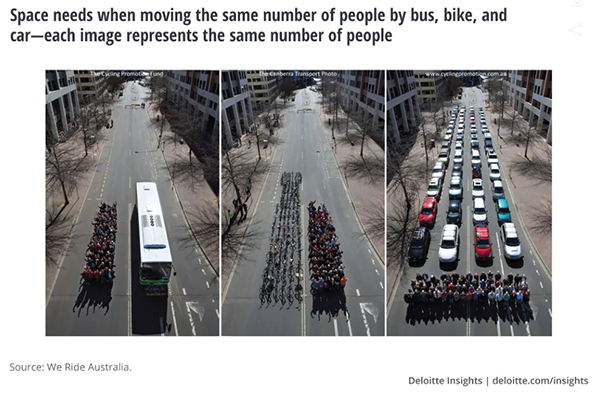
Source: Deloitte
A new road revolution is upon us as the reality of autonomous/driverless cars comes ever closer. While AI and sensors built into vehicles will power this new technology, their ability to communicate with each other and with smart road infrastructure is vital. How can we best prepare the advanced road markings, smart signs, wireless communication and cyber security needed for this road and digital infrastructure?
It is the combination between software and hardware that matters. We need intelligent infrastructure solutions to capture data. Intelligent road markings and sensors built into vehicles can make our roads both more efficient and safe. Essential when we take into account the fast development of cooperative, connected and automated driving.
Glow in the dark road markings or interactive lights offer us the opportunity to improve the environment by saving electricity and thinking about our animals living in the area. In the city intelligent infrastructure can give us real-time information about the fastest route and available parking space. Smart grids and safe routing can contribute to better crowd management, less air and noise pollution and sustainable urban distribution. Or a traffic light system can help elderly people or children cross the street at their own pace.
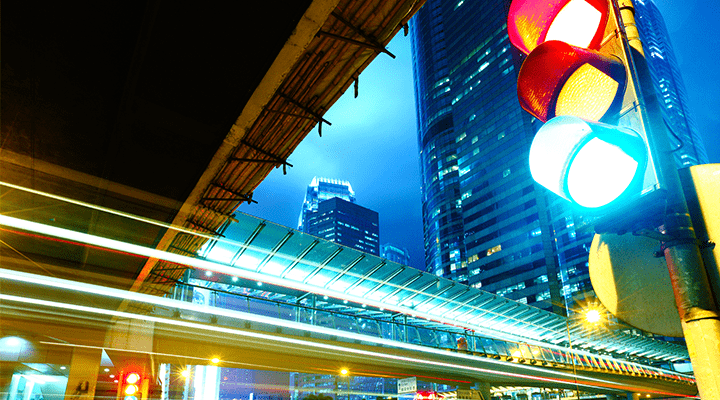
The province of Noord-Holland installed intelligent traffic lights, so called iVRI’s, on 13 intersections on the provincial roads in the area of Schiphol Airport. The information enables to give specific target groups, such as cyclists, emergency vehicles, public transport or heavy transport, priority over regular traffic. In the upcoming years all 5,500 traffic lights in the Netherlands are to be replaced with intelligent ones.
What about longer distance travels of around 500 km? More sustainable solutions such as the Hyperloop or Maglev are already in use. Hyperloop will help us travel 550km in half an hour, thanks to a vacuum train that travels through a tube. Or the Maglev in Shanghai, a metal object made to levitate by creating an alternating magnetic field under the object. New modes of transport asking for new and intelligent infrastructure could offer an alternative for a plane.
And there are even more examples of sustainable infrastructure. Like in Rome where people buy a metro ticket paying with a plastic bottle. Or in India where they make highways out of plastics offering the citizens a job collecting the plastic. Inspiring examples where people themselves can make a difference and are engaged by giving them an incentive and combining strengths.
At the end of 2018 there were 3,29 million electric vehicles worldwide. Although this is still low compared to normal vehicles (1 billion), it is estimated that EV will grow over the next years. In the Mobility 2030 Report of KPMG it is announced that the Netherlands is ready for the EV market to grow. However, we need to implement the right tools to make driving an electric vehicle even more attractive.
The estimated average distance to work in the Netherlands is 40 kilometres. This is within the range of a standard electric battery. And it is noted that the Netherlands has 28% of Europe’s charging points. The biggest fear for people to drive an electric vehicle is not knowing whether there is a charging station available at the location of your appointment. Also the price can attract more EV’s. There have been good examples of governments subsidizing electric driving, but advances in production and drop in battery costs are expected to bring parity to the cost of ownership.
From electric driving to autonomous driving. Fully self-driving vehicles connected to roadside infrastructure and other vehicles emitting and receiving data while the passenger uses the time to do something else than driving, such as working or watching a video. Far-off future or close to reality? Autonomous vehicles can have several functions: Blind Spot Monitoring for truck, Lane Departure Warning, Adaptive Cruise Control, Collision Avoidance, Park Assist and Vehicle-to-Vehicle communication. Up to Geofenced Autonomous Driving and the full experience. It is clear that the uptake of these technologies is fully dependent on the readiness of the eco-system and 5G.
The fast developments in autonomous driving are coming from China. Zero emission is high priority for the Chinese government. Autonomous driving has even become part of the national shared mobility plan. Recent report from Capgemini called Connected Vehicle Trend Radar explains that China should be seen as the most dynamic source of innovative ideas. In 2018 the highest number of sales of connected vehicles was in the US with 31%, but China is expected to overtake.
Others predict that the Netherlands is in the leading position to drive the adoption of CAV’s. The province of Noord-Holland has done some fruitful tests involving connected autonomous vehicles. An experiment with a platoon of 7 connected cars (Cooperative Adaptive Cruise Control) showed that by sharing and connecting data, cars will pass an intersection much faster.
However, like Peter van der Knaap of research institute SWOV argues, we have to keep in mind that our road safety comes first. When driving an autonomous car we cannot become passive. During a research it was discovered that it could take at least six seconds for experienced drivers to safely take back control in an autonomous vehicle. We might need extra courses or education to be able to drive such a vehicle. Joyce de Winter, exhibition manager of Intertraffic Amsterdam, is not sure if driving a private autonomous car in the city would ever be possible: “In the city too many modes of transport all come together and it is a big challenge to let them all communicate with each other in the safest way possible.”
Autonomous vehicles can have a wide social impact governments need to think about. It could help reduce congestion and have positive environmental effects meeting zero emission targets. With automated and robots a new discussion rises: will autonomous vehicles reduce the need for human drivers, for instance in public transport? Again we need to be smart and think of a win-win-win solution. We could use these drivers as personal guidance for elderly people traveling the last mile. We can combine strengths and have impact on society.
The best way to find answers to these questions is by working together and exchanging global knowledge. Do you want to join us exchanging knowledge?
Be part of the mobility transition at Intertraffic Amsterdam 16 - 19 April 2023.
The leading trade event for mobility professionals with over 900 exhibitors and close to 35,000 visitors from all around the world. Moreover, we have a free to attend high level Summit Programme to top up your knowledge. Go to www.intertraffic.com/amsterdam for more information.
